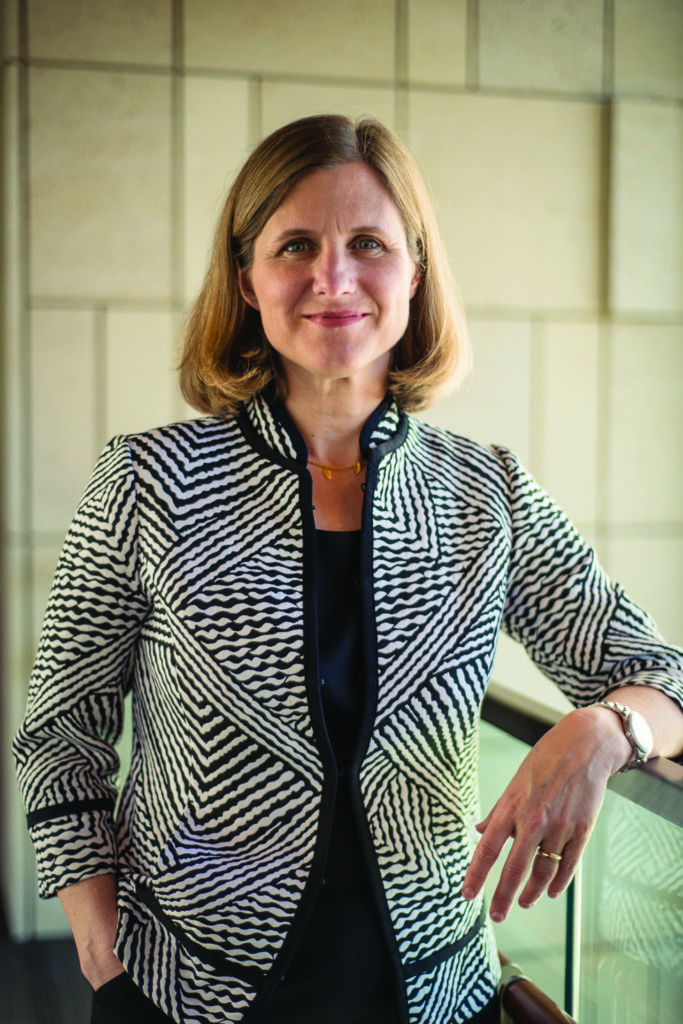From the Dean

In word association games, the words “creativity” and “innovation” are rarely paired with “law” and “lawyer.” Artist, musician, even mathematician, yes. But lawyer, no. In this issue of Stanford Lawyer, though, our feature zeroes in on our cluster of extraordinary faculty who work at the intersection of law and creativity and its relative, innovation.
The legal regime with the clearest connection to creative expression is of course the law of copyright, which grants legal protection to the creators of original works. But both patent and trademark law are connected to creativity when we recognize discovery and distinctive commercial identities as, at least in part, creative acts. And the very architecture of the internet shapes whether it is, or is not, an engine of innovation and robust expression. These are the issues that are at the heart of the work of our remarkable faculty members Paul Goldstein, Mark Lemley, Doug Melamed, Phil Malone, Lisa Larrimore Ouellette, and Barbara van Schewick.
Three things stand out about their work. First, they are far-sighted thinkers, grappling with the evolution of information delivery, technology, and discovery and the economic and competitive consequences of those developments. Look no further than Paul Goldstein’s book, first published in 1994, Copyright’s Highway: From Gutenberg to the Celestial Jukebox, where he predicted, with what one reader called “spooky accuracy,” the emergence of the “celestial jukebox,” namely a “technology-packed satellite” providing access to “films, sound recordings, and printed materials.” In Paul’s telling, his work in Silicon Valley in the mid-1970s with Paul Baran—a pioneer in the development of computer networks—helped shape his thinking about what the internet would mean for the delivery of content. His deep understanding of the law allowed him to outline how that technological change would profoundly challenge conventional intellectual property assumptions.
Second, to a person, they are great mentors and teachers to their students. This is not a faculty who thinks their research obligations and their teaching obligations are in conflict. Their students are deeply engaged with and influenced by the work that they do—from Mark Lemley’s team of researchers who are helping create his patent troll dataset, to the students who work with Phil Malone in the clinic to find opportunities to intervene in cases to advance the cause of innovation, to Barbara van Schewick’s former students and mentees who are emerging leaders in fields related to technology and law.
Finally, this group of faculty do not live in an ivory tower. They are, in fact, actively engaged with policy, law reform, and governance. Doug Melamed, widely regarded as among the most gifted antitrust thinkers in his generation, did not make his home in the academy until just a few years ago, and his insights are inevitably informed by his experiences as a practicing attorney, senior DOJ lawyer, and general counsel to Intel. All of the others featured here routinely help shape the relevant policy questions, such as Lisa Ouellette’s ongoing project to ask, broadly, how various areas of law and policy do (or do not) foster innovation or Mark Lemley’s successful efforts to provide data to inform hotly contested debates in IP law. They also often provide deeply informed answers to pressing real-world questions, such as Barbara van Schewick’s tireless work to convince regulators to adopt rules promoting net neutrality or Paul Goldstein’s policy practicum, which is about to release a new prototype copyright license for digital images.
I know you will enjoy this feature on this bedrock area of strength for Stanford Law School, but there is much more to enjoy here as well. I hope you’ll read on.
